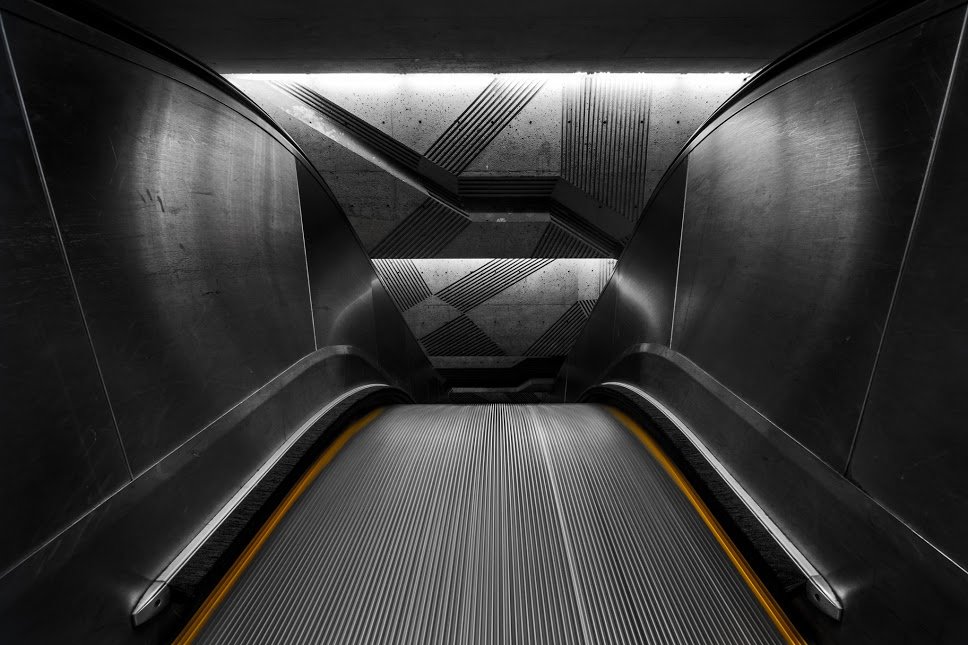48 hrs in McLaren’s 616 hp go-fast device: the brilliant 12C Spider
Drivers are given the choice of Normal, Sport and Track Modes, which are adjusted by a knob on the center console. I tried all three and found Normal to be perfect for showing off around the city as the 12C soaked up Toronto’s nefarious tram-tracks and irregularities with ease. But for the most part I left the car in Track mode just in case I had the urge to really drive. Again, we see McLaren’s Formula 1 experience carrying over to real world application with undeniable success.
Another stroke of wizardry is Brake Steer technology, something I had no idea the 12C Spider was equipped with until after I’d driven the car. The Brake Steer technology is designed to “manage traction, minimize mid-corner understeer and control oversteer when cornering at speed” according to McLaren. This outlawed bit of Formula 1 engineering was outright banned when McLaren was caught using it in their MP4-13, as it gave the team a significant braking and handling advantage in the corners.
The system takes into consideration speed and steering angles, then “calculates” best braking pressures to the back inside wheel, causing the car to “pivot” around that point rather than just steer through. Something that came in very handy when I was negotiating Wendy’s drive-thru in an effort to acquire the #7 Chicken Grill combo. Of course I would never allow crumbs into the 12C so I left it outside, watched over by Toronto’s finest.

Aesthetically, the car is a photographer’s wet dream. With the exception of the nose, which I find a bit piggish on profile, the 12C Spider is capable of causing a wide range of individuals (i.e. business persons, Wendy’s customers, Toronto law enforcement officers and Niagara Falls tourists) to turn their heads and open their mouths in an unflattering way. But photos are worth a thousand words, so check the gallery for the full visual experience … though it’s fair to say that the car is far more dynamic and stunning in person than it is on screen.
The 12C’s two-piece roof is like the rest of the car, an exercise in lightweight form and perfection. With a small electric window located behind the passengers, air and engine noise can be allowed into the cockpit space, but should one desire the full open air experience, then flick that switch and 17 seconds later the top is down. The top can be raised or lowered at speeds of up to 19 mph.
With the top down, air turbulence and wind noise in the car was actually acceptable. Even at higher speeds, the cockpit stayed reasonably hospitable thanks to some clever wind tunnel engineering. The climate system is designed to compensate when the roof is down, redirecting airflow and fan speed. The 12C’s Meridian audio system is also responsive to the topless scenario, adjusting volume and tone to individual speakers to ensure output is similar under open or closed conditions.
Inside the 12C, unlike some exotics (I’m thinking Ferrari), the seats are comfortable enough for 3-4 hour drives yet supportive enough for more enthusiastic driving. Legroom and headroom is excellent. Temperature gauges on the dihedral doors are ergonomically odd and perhaps a little distracting, but they do help to free up space on the center console. The driving position is also excellent, as is visibility.
It’s also worth mentioning McLaren’s carbon fiber monocoque, or passenger tub, which was a world first in Formula 1 in 1981. Carbon fiber passenger cages are not only lighter than steel or aluminum, but they provide significantly better torsional qualities. This is important in most convertibles, because with the all important roof piece missing, chassis flex becomes an issue. With the help of the carbon fiber monocoque, chassis flex between the 12C Spider and coupe remains almost identical.
On paper, with all these Formula 1 influences at play, one would expect a car that was clinically bereft of personality and about as appealing to drive in the city as a go-cart. But no. Somehow Team McLaren, with the input and direction of Chairman Ron Dennis and Design Director Frank Stephenson, managed to produce what may be one of the best all-round road cars in the world. Mind you the 12C’s lack of luggage space and hefty price tag makes the argument a tad more difficult, but given the choice between this or a Ferrari, I’d take this tastey bit of British bangers and mash any day.
(*Portfolio feature. This story originally ran in gizmag.com)
My thanks to McLaren Toronto & McLaren North America for the experience.
www.McLaren.com

